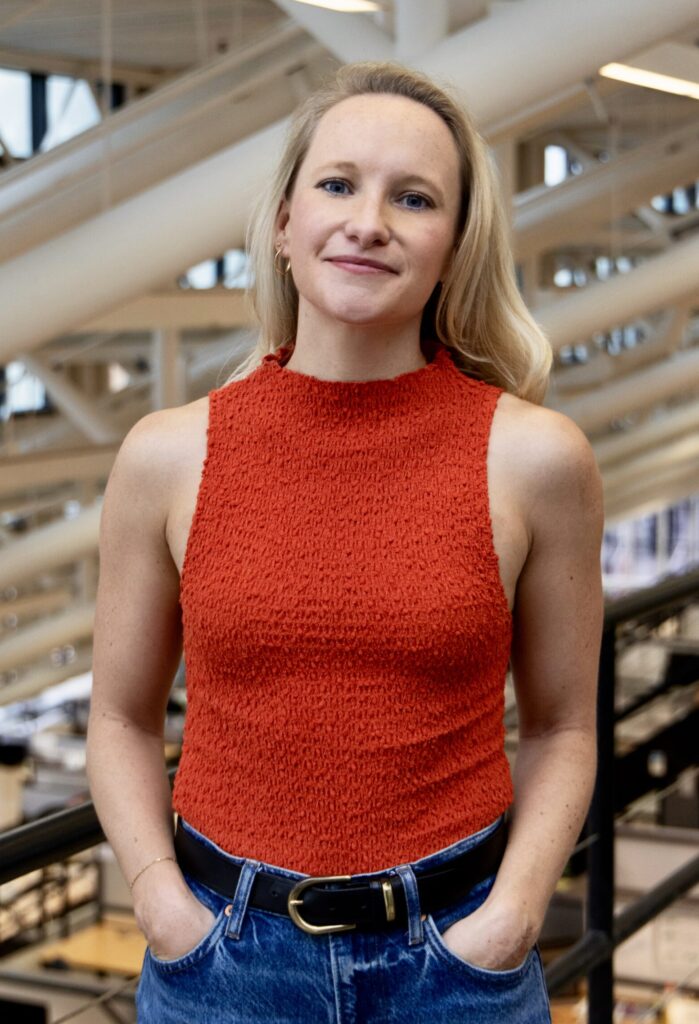- Fellow Highlights
LOOKING BACK AT THE FELLOWSHIP: Architecture Student Katarina Richter-Lunn
2022 Paul & Daisy Soros Fellow Katarina Richter-Lunn is a DDes candidate at Harvard University.
Katarina was born in Palma de Mallorca, an island off the southern coast of Spain, to a British mother and a German father. At 18, Katarina moved to the United States to pursue a Bachelor of Architecture degree from the California Polytechnic State University, in San Luis Obispo. Inspired by her mother who was both a psychologist and an art therapist, Katarina wanted to reach beyond the discipline of architecture, an ambition that led her to begin her interest in addressing mental health through design.
We caught up with Katarina about what’s next and what the Fellowship has meant to her:
Can you tell us more about your graduate studies? What questions are you pursuing? What is the main focus of your studies?
The core question leading my doctoral research, which I am pursuing at the Harvard Graduate School of Design, is How can our built environment address, respond, and improve inhabitants’ mental health? This question of course is much too grand for a single dissertation, and I have broken it down into multiple subsections to begin to find the answers.
-Always starting with the human, I focus on live assessments of their psychophysiological metrics that give insight into someone’s current psychological state. To name a few, these metrics are heart rate, electrodermal activity, respiration rate, and muscle tension for example.
– Using these quantitative metrics along with an assortment of qualitative data I design a response within their built environment which will act as a form of therapeutics to mitigate undesirable psychological states such as heightened stress or anxiety.
– These interventions take a number of forms and scales. Some take the form of a wearable which sits intimately on the wrist, other cases they take the form of a piece of furniture or lamp, and more predominantly in my dissertation work these live alternations take the form of architectural material, geometry, or ornamental change in the built environment as a response to symptoms of anxiety.
There are so many paths beyond college; why did you feel graduate school was the best next step for you personally and/or professionally? Was it hard to take the risk of going to school or something you always knew you wanted to do? What has it helped you figure out or accomplish?
It is never an easy decision to leave the stability of a good job and go back to school to pursue a graduate degree. Even more so when your industry (architecture) does not require a terminal degree. However, after working for several years at one of the world’s most renowned Architecture offices I knew that my ambition to pursue research in the field would be best accomplished if I went back to school. Especially, cross-disciplinary work such as that between design, psychology, and technology. After I completed my two-year master’s degree in design technology at the Harvard Graduate School of Design, I felt I still had so many questions to explore and recognized the increasing urgency in the world for them to be answered. When given the opportunity to stay and pursue a Doctoral Degree in Design in collaboration with the School of Psychology at Havard it was too valuable of an opportunity to turn down. Reflecting on where I am now and the potential to truly influence my discipline, I know that returning to school was the best path for me and has positioned me to remain within an area of research and academia as I move forward in my career.
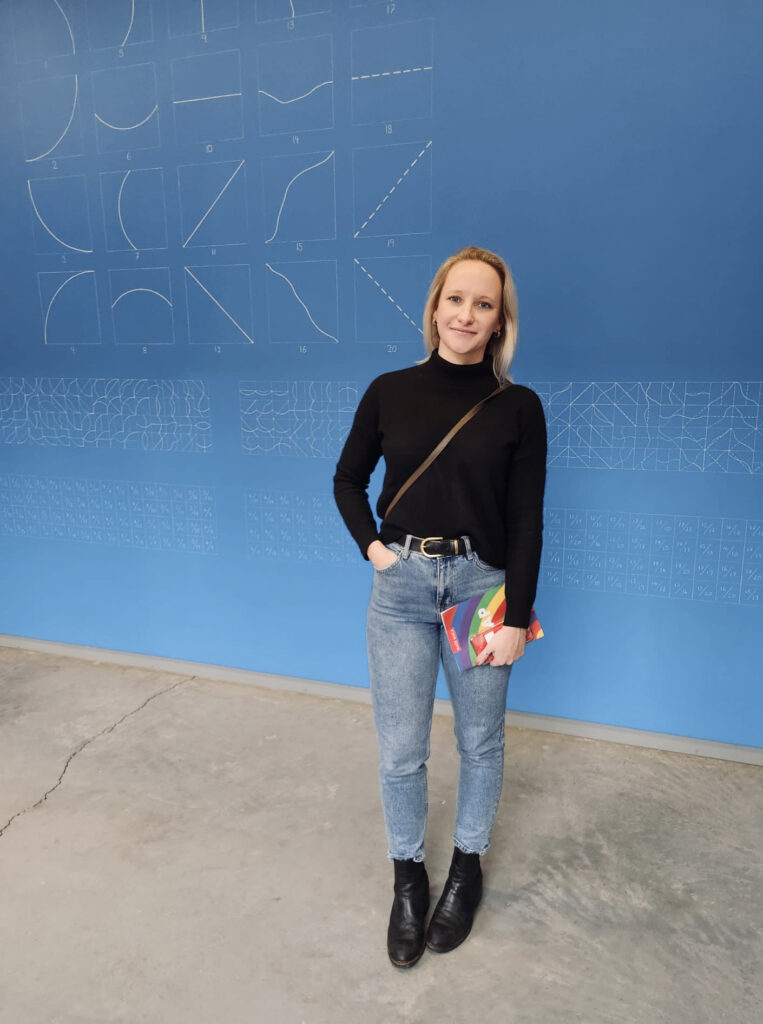
How do you describe The Paul & Daisy Soros Fellowships for New Americans program to others?
I have grown to describe the Paul & Daisy Soros as an incredibly supportive family. First, because it is one of the first environments in my adult life, outside my immediate family, in which I have felt completely at ease being 100% myself and encouraged to follow my dreams no matter how out-of-the-box they might seem. Second, because just like a family that makes you feel safe and supported the Paul and Daisy Fellowship made me feel supported, financially and emotionally, through a time which otherwise would have been very stressful and fostered a safe community in which we could share our vulnerabilities and strengths with no judgment or prejudice. Lastly, it is a family because even though we all come from different walks of life with very different research we all support and care for each other knowing that we are all essential parts of this unique community.
Why did you apply to The Paul & Daisy Soros Fellowships for New Americans? What ended up being the most important part of the Fellowship?
When I first heard about the Fellowship, I never thought about applying. Looking through the profiles of the fellows and seeing all they have accomplished astounded me and I thought to myself that I would never stand a chance. I then met a fellow architect who had applied and became a fellow and he insisted on me applying and believed in my work and character. I decided in the end to apply for two reasons, first, I was in desperate need of greater financial support for my Doctoral Degree in Design at Harvard, GSD, and was on the verge of taking a leave to work full time and save up more funds. Second, I saw the application as an opportunity to truly reflect on how my mixed nationality and upbringing had shaped who I am today and the work that I pursue. In the end, after two years of being a fellow, I can say that what ended up being the most important part of the Fellowship for me was the community I joined and their unwavering belief in me and my work.
What advice would you give to someone who is thinking of applying to The Paul & Daisy Soros Fellowships for New Americans?
Just as my friend encouraged me to apply even when I thought I would never stand a chance I would encourage every eligible student to apply and take it as an incredible opportunity to reconnect with your past, talk to your family, and reflect on what truly drives the work you do today. Because I know that, at least in my case, the reflection was invaluable to re-grounding my research and remembering why I love doing what I do. ∎
Keep Exploring
-
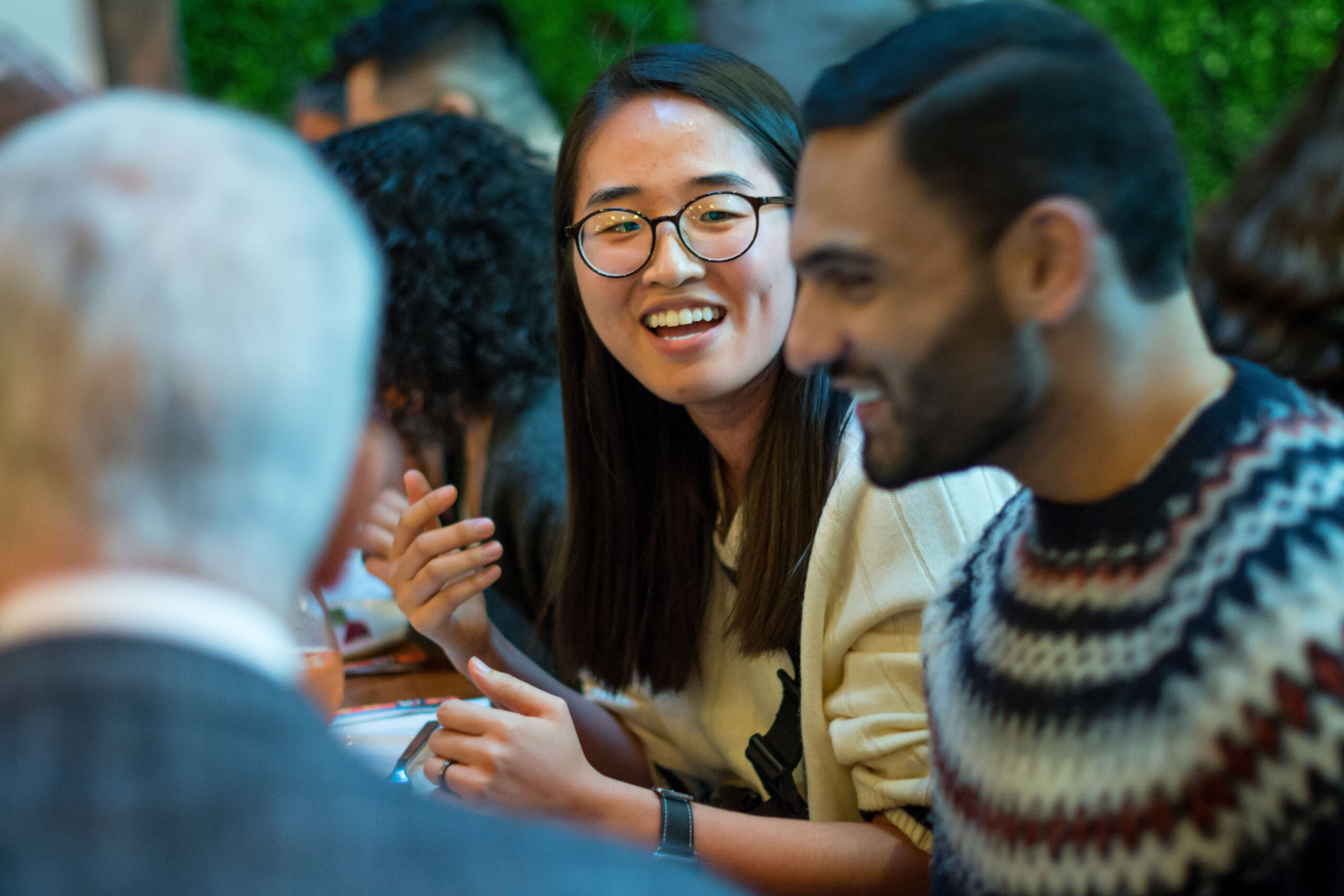 Read more: Kathy Ku Steps into Leadership as PDSFA Chair
Read more: Kathy Ku Steps into Leadership as PDSFA Chair- Board of Directors
- Fellowship News
Kathy Ku Steps into Leadership as PDSFA Chair
-
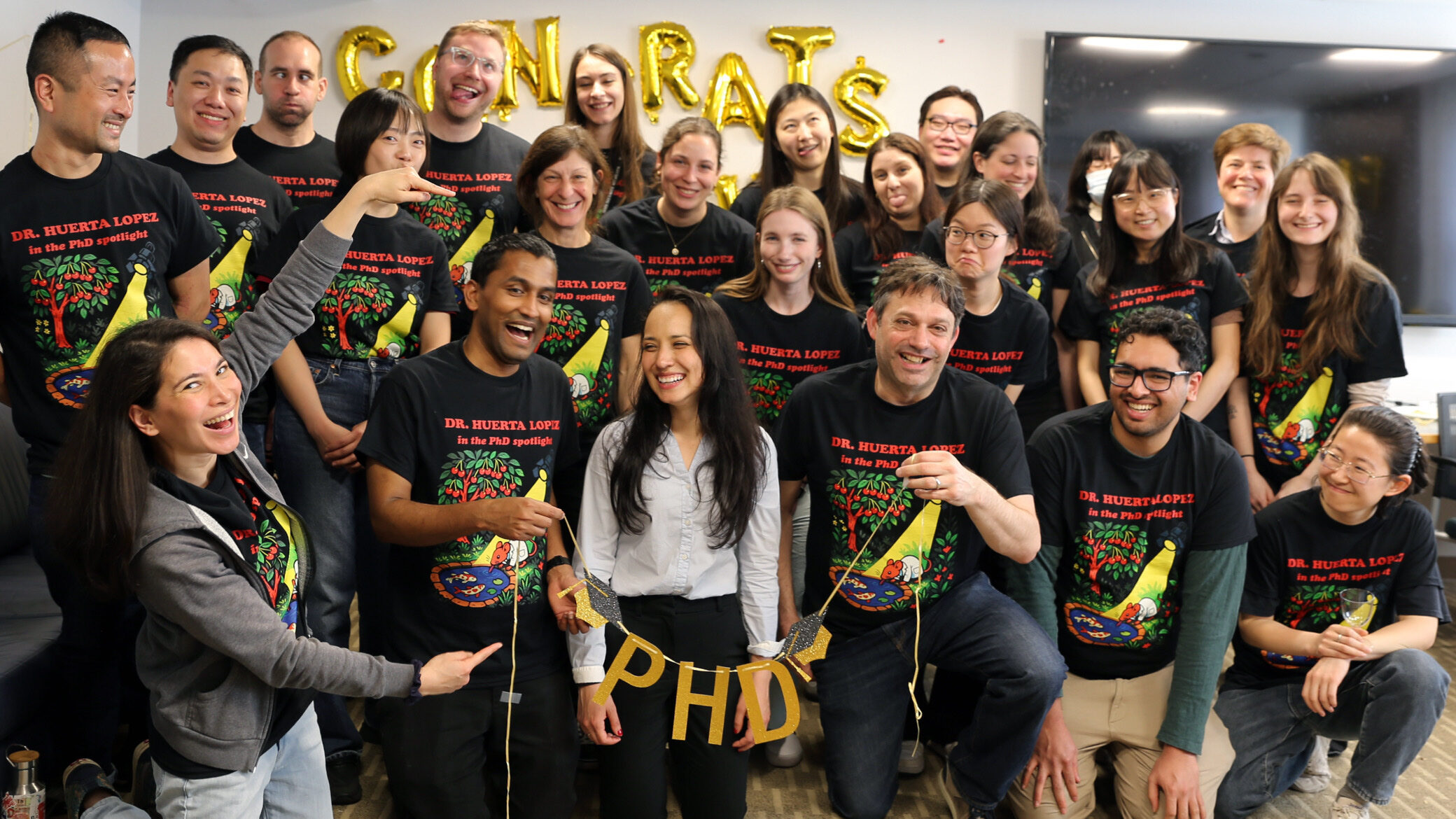 Read more: Q&A with MD/PhD Student Silvia Huerta Lopez
Read more: Q&A with MD/PhD Student Silvia Huerta LopezQ&A with MD/PhD Student Silvia Huerta Lopez
-
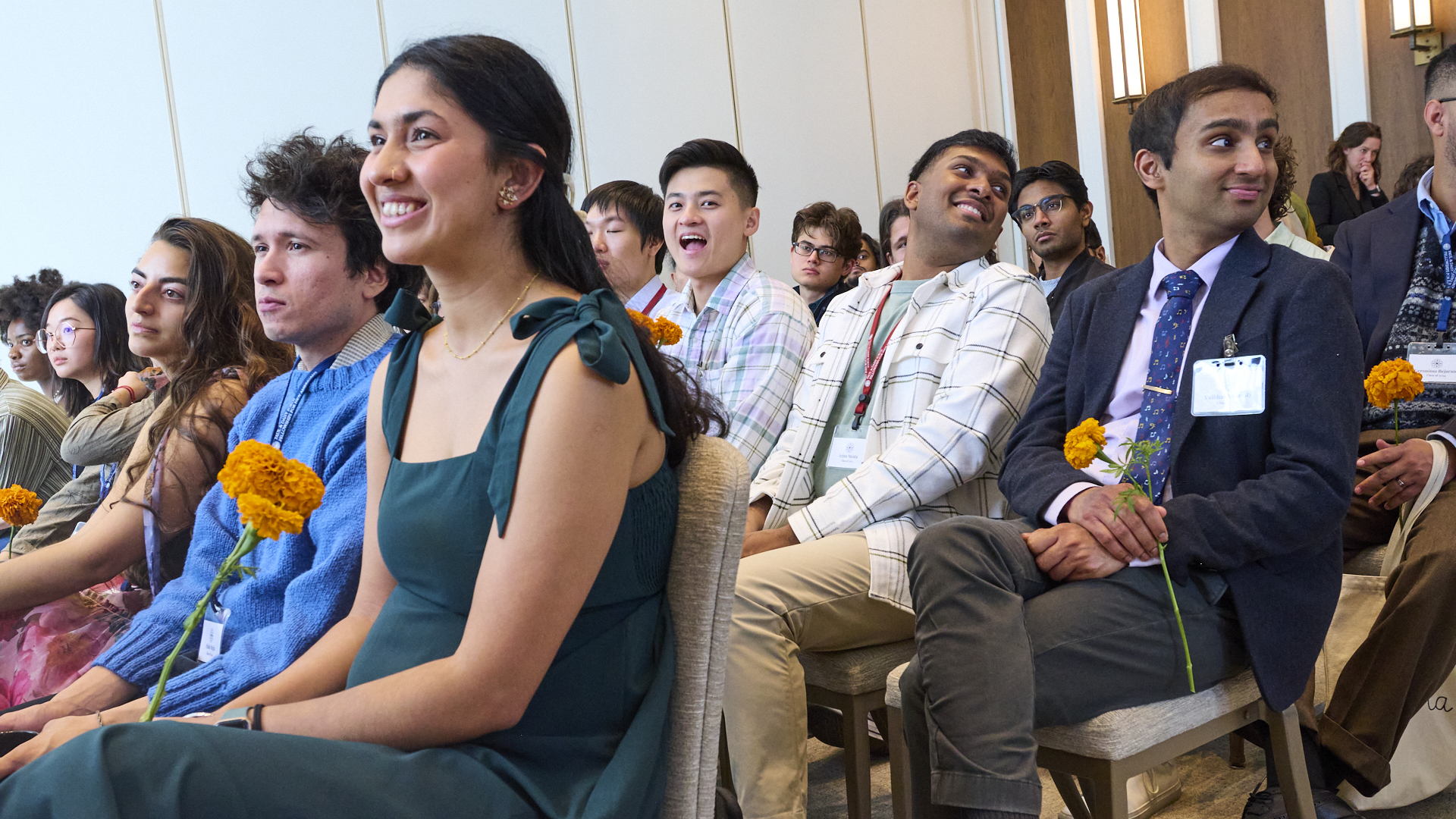 Read more: PD Soros Eligibility Guide for PhD Applicants
Read more: PD Soros Eligibility Guide for PhD Applicants- Applicant Information
PD Soros Eligibility Guide for PhD Applicants
-
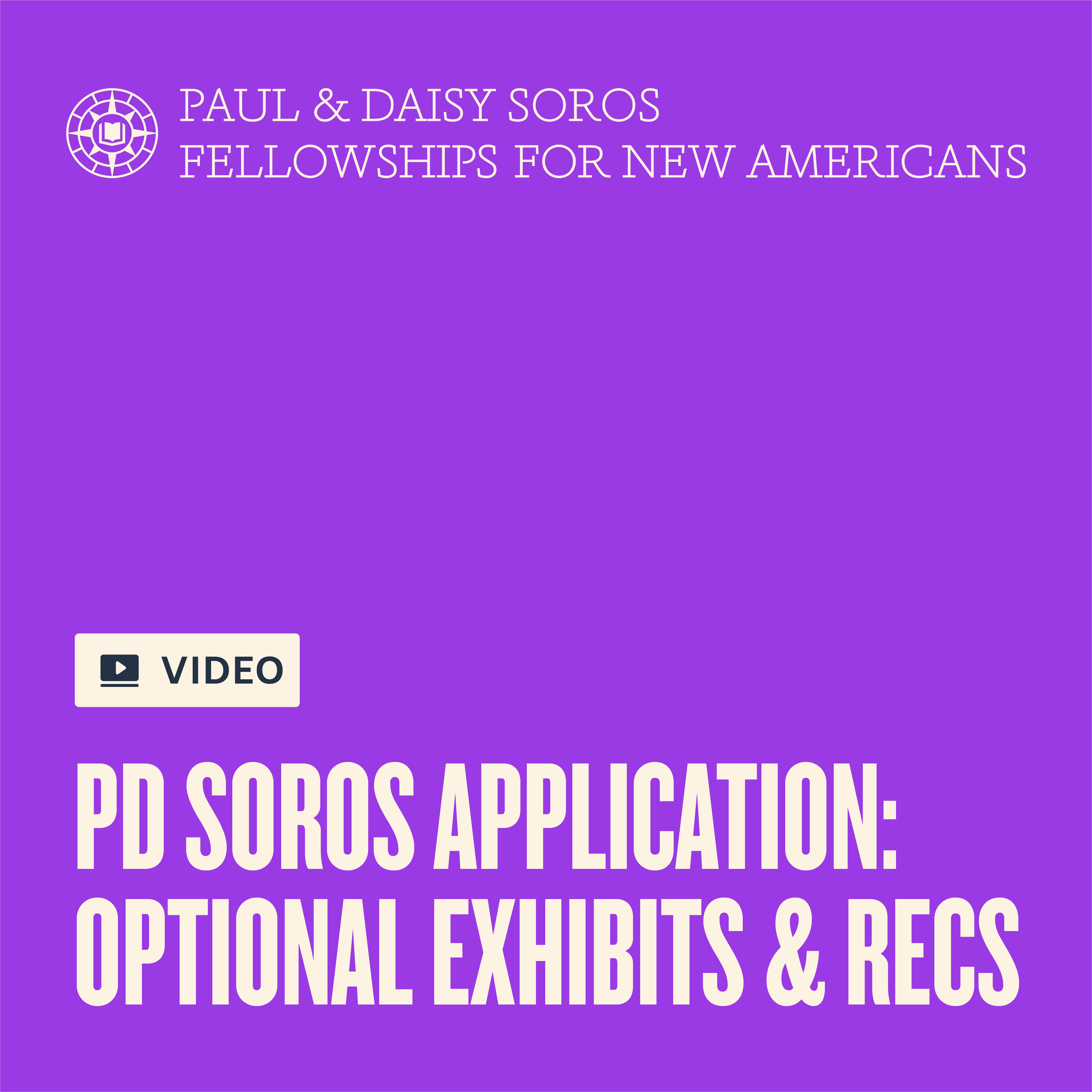 Read more: Watch: Optional Exhibits & Recommendations
Read more: Watch: Optional Exhibits & Recommendations- 2025 Information Sessions
Watch: Optional Exhibits & Recommendations
